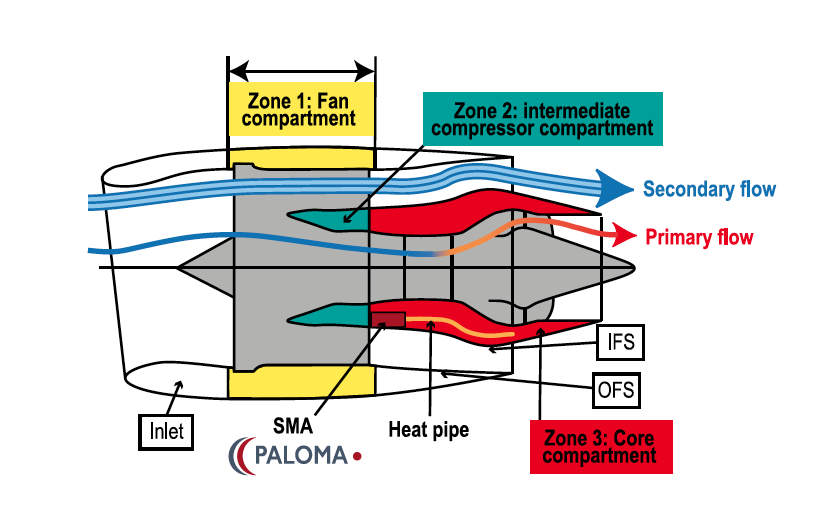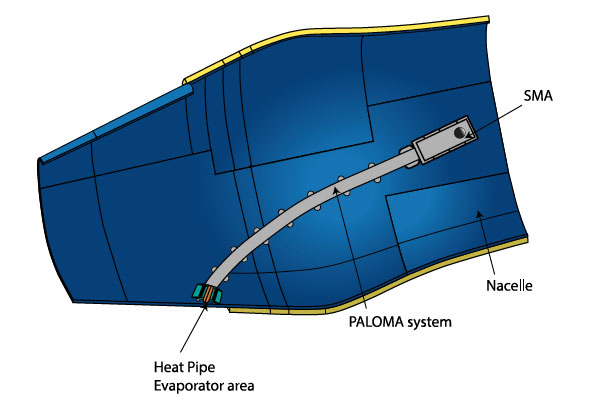PROJECT OVERVIEW
AIM OF THE PROJECT
The aim of Paloma project is to optimise the engine ventilation by reducing the cooling of the core compartment depending on its temperature.
To do so, passive actuation has been considered. This makes the system both light and reliable. The solution, based on heat pipes and the shape memory alloys, will actuate the opening of some of the ventilation inlets depending on the temperature of the engine core zone.
The objective is to use the heat released by theengine to trigger the opening of the flap. A heat pipe is used to transport the heat capturedthe engine to a shape memory alloy placed frontward in the compartment. The shape memory alloyis heated up and changes its shape, which activates the opening mechanism and allows the cooler air to enter the compartment.

MAIN TECHNICAL OBJECTIVES
The main technical objectives of the project are:
- Design and development of the Paloma cooling system. This will be achieved through the selection and characterisation of a suitable Shape Memory Alloy (SMA) and its geometry. The SMA should be able to provide appropriate mechanical reactivity within a given temperature range. Ventilation inletopening mechanism will be developed and designed (special design based on SMA motion characteristics). Also, a suitable heat pipe will be selected and characterised to transfer heat across the engine from the rear to the front zone of the engine where the ventilation inletsare installed.
- Identification of the best position for the Paloma system in the nacelle. This will be done by combining thermo-mechanical modelling and CFD simulations. It is expected that several inlets will be radially positioned around the engine.
- Integration of the Paloma system in a nacelle environment.
- Manufacturing of a functional prototype to be tested on ground. Test results will then be used to confirm and validate the design and potentially to update/correct the design pending the lesson learnt from this laboratory test.
- Use of test results to validate the numerical modelling and to obtain a complete representative system model.
TECHNICAL CONTRIBUTIONS CONSORTIUM
EPSILON
Fluid and thermal simulations adapted to the civil aircraft cycle
AKKA
Mechanical design taking into account the aeronautical constraints of a nacelle environment
ATHERM
Manufacture and testing of a heat pipe with optimised response time – Made in France
NIMESIS
Manufacture of an Sma using a smart material at high T°C – Made in France – Avionics environment
test of the PALOMA system on a specific test bench
PROJECT TIMELINE
WP1
Technology selection & characteristisation (ATHERM)
WP2
Implementation of PAI model (EPSILON)
WP3
Test bench development (NIMESIS)
WP4
Prototype & demonstrator activities (NIMESIS)
WP5
WP6
Communication, dissemination and exploitation of results (ATHERM)

